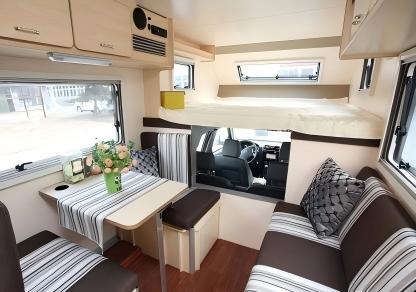Many RV owners are talking about lithium batteries. Based on years of real-world use, we know they make a huge difference in your camping experience. This guide will help you. It breaks down everything you need to know for a great upgrade, using simple terms.

Why You Should Switch to Lithium
Why should you switch? Switching to lithium batteries gives you two huge benefits that old lead-acid batteries just can't match.
First, they last much longer. Lithium batteries can be charged and used thousands of times, making them a better value over many years even though they cost more at first. Second, you get more power. You can safely use almost all the power in a lithium battery, but a lead-acid battery is damaged if you drain it below half full. This gives you double the energy for the same size. Lithium batteries are also a lot lighter, which means you can carry more gear in your RV.
What Parts You Need to Change
You must change two things. To upgrade, you need the new lithium batteries and a compatible converter, which is the part of your RV that charges them. Newer RVs are easy. Most RVs made after 2020 already have a converter that works with lithium; you just have to flip a switch on it. Older RVs need a new part. If your converter is old, you must replace it with one made for lithium batteries or you will never get a full charge and could even damage them.
Don't Worry About Your Alternator
Many people worry that new lithium batteries will draw too much power and destroy their truck's alternator. This is not true. If you have a travel trailer, the long, skinny wire connecting it to your truck can't carry enough power to cause any damage. You will only get a tiny charge. For a motorhome, connecting a big battery bank directly to the alternator can make it work very hard for a long time. The real issue isn't damage, but slow charging.
The Best Way to Charge While Driving
If you really want to charge your batteries while you drive, you need a special part called a DC-to-DC charger. This device fixes the problem. It takes the weak power from your truck and boosts it to the perfect level that your new lithium batteries need. Choose a good size. A 20-amp charger is a simple, great choice for most travel trailers and can be connected to the existing trailer plug. For faster charging, run a new wire. Always be safe and choose a smaller charger, like a 30-amp model, if you are unsure what your alternator can handle.
How to Handle Cold Weather
Lithium has one big weakness. You cannot charge these batteries when the temperature drops below freezing because their internal safety system will shut them off. This can cause flickering lights. Luckily, there are three great ways you can solve this very common problem. First, move them inside. Just install the batteries in a part of the RV that stays warm. Or, buy special batteries. You can get batteries with built-in heaters that warm themselves up before they start to charge. You can also build your own. A cheap and effective fix is to place small RV tank heating pads under your batteries and wrap them in insulation.
Putting Your Whole System Together
A great system is more than just good batteries; you have to think about all the connected parts. Get the right gear. Pairing 400 watts of solar panels with a 300 amp-hour battery bank gives you amazing power for off-grid camping. Always use thick wires. Make sure you use the correct size wiring and add fuses to protect your expensive equipment from damage. Help your batteries last longer. You don't always have to charge your batteries all the way to 100%, as keeping them a little lower can actually make them live longer. Stick with a 12-volt system. For almost all RVs, a simple 12-volt setup is the best and easiest choice to install and manage.


